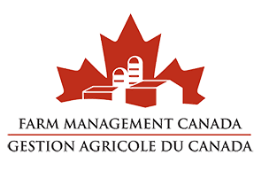Category: Finance | Topic: Cashflow Management, Financial Literacy, Market Disruptions, Business Management
Posted Date: March 31, 2023

The context
Farm Management Canada recently hosted agricultural representatives, including producers, advisors, lenders, associations, academia, and more, at a national forum in Ottawa focused on risk management for Canadian agriculture, where uncertainty emerged as the most dominant force influencing decision making in the 2020s.
The COVID-19 pandemic was the catalyst for change and both its occurrence and impacts were unforeseen, causing disruptions in global supply chains and a reprioritization of government spending.[1] As the world recovered from the pandemic, surges in demand led to shortages in supply, which were exacerbated by several events, including Russia’s invasion of Ukraine, domestic and international political tensions, and the increasing urgency for climate action resulting in new policies, targets, and practices.[2], [3]
The result of this [im]perfect storm is the current inflation we are experiencing, which went from -0.4% in January 2022 to 8.1% in June 2022.[4] Moreover, inflation has been made more complex by the emergence of new price drivers, such as fossilflation, greenflation, and climateflation, which had already begun to impact economies around the world amidst the urgency of ensuring an effective and timely net-zero transition.[5]
What does it mean for Canadian farmers now?
The risks of inflation have already been observed in the rapid increases in interest rates set by central banks. Between January 2022 and March 2023, the Bank of Canada raised interest rates from 0.25% to 4.5%.[6] While the hikes seem to have begun taking effect, with total inflation coming down to 5.2% in February 2023,[7] debt exposure is high for lenders due to higher input costs and lower profits for farmers.[8]
In the meantime, prices are not moving at the same pace along the supply chain (see graph) which may squeeze margins when input prices increase faster than end product prices, making productivity gain all the more crucial.
In the short term, this means new investments will be much costlier due to higher interest rates. This also means higher prices for consumers, since many businesses plan to raise their prices, or have already.[9] Indeed, food (and energy) have been observed as the two primary drivers of current inflation.[10]
Labour is also in short supply, which increases the time pressure on farmers and impacts operations, performance, and mental health.[11] Issues related to farm labour, combined with the push for technological solutions to climate change and improving the sustainability performance of farms, have given steam to discussions around farm automation.[12]
Consumers are changing their eating habits due to social and political pressure, and their purchasing behaviours are also changing due to economic and financial concerns. Supply chains are changing in response to geopolitical disruption and the urgency for climate action. All of this and more contributes to the uncertainty pervading the market, which may ultimately be a risk to the profitability of farms.
What does it mean for Canadian farmers going forward?
Despite the ominous uncertainty, investors note that the current conditions could be beneficial for farmers to boost production, since global grain inventories are close to 20-year lows and prices are up by between 25–50% from their 10-year averages. Market watchdogs note that these factors indicate agriculture is a good long-term investment, also taking into consideration the growing global population.[13]
As for climate change, however, there is a consensus that it will affect monetary and macroeconomic policy.[14], [15] We have seen how climate change will affect price dynamics with an inflationary trend, at least during the energy transition period. Meanwhile, its impact on interest rates is less clear, but won’t be neutral, which will complicate monetary policy creation and, as a result, investment decision-making.[16], [17], [18]
Climateflation, greenflation and fossilflation will all contribute to making the price of agricultural inputs and commodities very volatile over the transition to a new energy system. That combined volatility of both expenses and revenues will require very robust management skills while requiring revised or new risk management tools. In the meantime, the cost of capital and insurance will also be driven up by climate change. This could mean having to re-evaluate the framework with which farmers manage their financial risk by coupling it with a climate-risk management framework.
Besides, new prudential rules addressing climate-risk management in financial institutions (banks, insurers)[19] may also redefine their profitability in line with the carbon footprint and climate-change-sensitivity of their respective assets portfolios, possibly resulting in increased financing costs.[20]
What can farmers do to manage risk?
Improving productivity remains a key risk mitigation strategy in the current inflationary environment. Yet, the latter may affect investment planning. This may manifest as delaying planned production upgrades, such as the purchase of a new tractor or upgrading a shop. If not delaying such investments, it could mean investing into training or infrastructure that could support on-farm transitions that may be necessary in response to climate policies.
Financial risk management is another key element: including planning investment over the medium term and long term, structuring credit in an adequate way, and managing interest-rate terms. These proactive steps to financial risk management should be undertaken in partnership with lenders and advisors to ensure robust planning.
Staying informed on the latest market insights regarding global trade relations, input supplies and pricing, climate change policies, and consumers’ dietary patterns could also help farmers to plan for any changes they might consider making to what they produce and how they produce it.
Considering all this uncertainty and instability, it would be advisable to integrate the scenario approach into strategic planning to be able to quickly change course if needed in an orderly fashion.
[1] https://www150.statcan.gc.ca/n1/pub/62f0014m/62f0014m2022014-eng.htm
[2] https://www.edc.ca/en/article/edc-top-10-risks-2022.html
[3] https://www.blackrock.com/corporate/insights/blackrock-investment-institute/interactive-charts/geopolitical-risk-dashboard
[4] https://www.bankofcanada.ca/rates/indicators/key-variables/key-inflation-indicators-and-the-target-range/
[5] https://www.ecb.europa.eu/press/key/date/2022/html/ecb.sp220317_2~dbb3582f0a.en.html
[6] https://www.bankofcanada.ca/core-functions/monetary-policy/key-interest-rate/
[7] https://www.bankofcanada.ca/rates/indicators/key-variables/key-inflation-indicators-and-the-target-range/; https://www.bankofcanada.ca/2023/02/higher-interest-rates-are-working/
[8] https://www150.statcan.gc.ca/n1/pub/62f0014m/62f0014m2022014-eng.htm
[9] https://www.cfib-fcei.ca/en/media/seven-in-ten-small-businesses-say-bank-of-canada-rate-increase-will-hurt-their-business
[10] https://www.imf.org/en/Blogs/Articles/2022/09/09/cotw-how-food-and-energy-are-driving-the-global-inflation-surge
[11] https://www.oecd.org/sdd/prices-ppp/statistical-insights-why-is-inflation-so-high-now-in-the-largest-oecd-economies-a-statistical-analysis.htm
[12] https://iea.blob.core.windows.net/assets/c578edac-2b69-4a5b-b8a9-0d007a9a8106/Technology_Innovation_to_Accelerate_Energy_Transitions.pdf
[13] https://www.theglobeandmail.com/investing/globe-advisor/advisor-etfs/article-why-agriculture-commodities-are-a-good-long-term-bet/
[14] https://www.weforum.org/agenda/2022/06/climate-change-monetary-policy-finance/
[15] https://www.ngfs.net/sites/default/files/medias/documents/climate_change_and_monetary_policy.pdf
[16] https://www.imf.org/-/media/Files/Publications/WP/2022/English/wpiea2022258-print-pdf.ashx
[17] https://www.ecb.europa.eu/pub/pdf/scpwps/ecb.wp2744~9c3a54be4f.en.pdf
[18] https://www.frbsf.org/wp-content/uploads/sites/4/Batten-Sowerbutts-Tanaka-Climate-change-Macroeconomic-impact-and-implications-for-monetary-policy.pdf
[19] For instance in Canada : https://www.osfi-bsif.gc.ca/Eng/fi-if/rg-ro/gdn-ort/gl-ld/Pages/b15-dft.aspx ; global framework : https://www.bis.org/bcbs/publ/d532.htm
[20] https://www.ebf.eu/wp-content/uploads/2022/05/P1-worng-tool-for-the-right-purpose.pdf
 Skip to main content
Skip to main content
